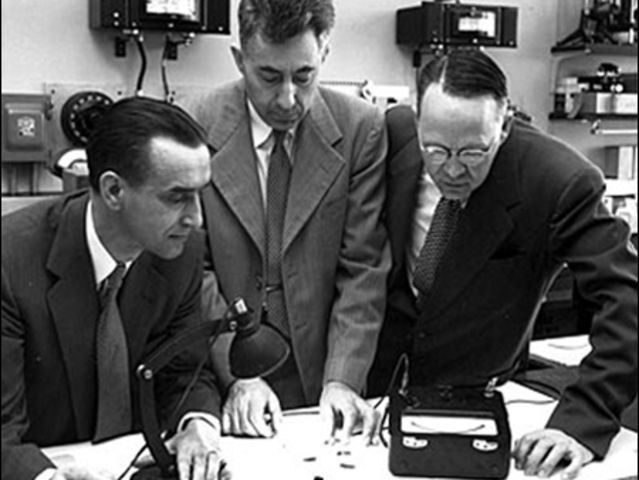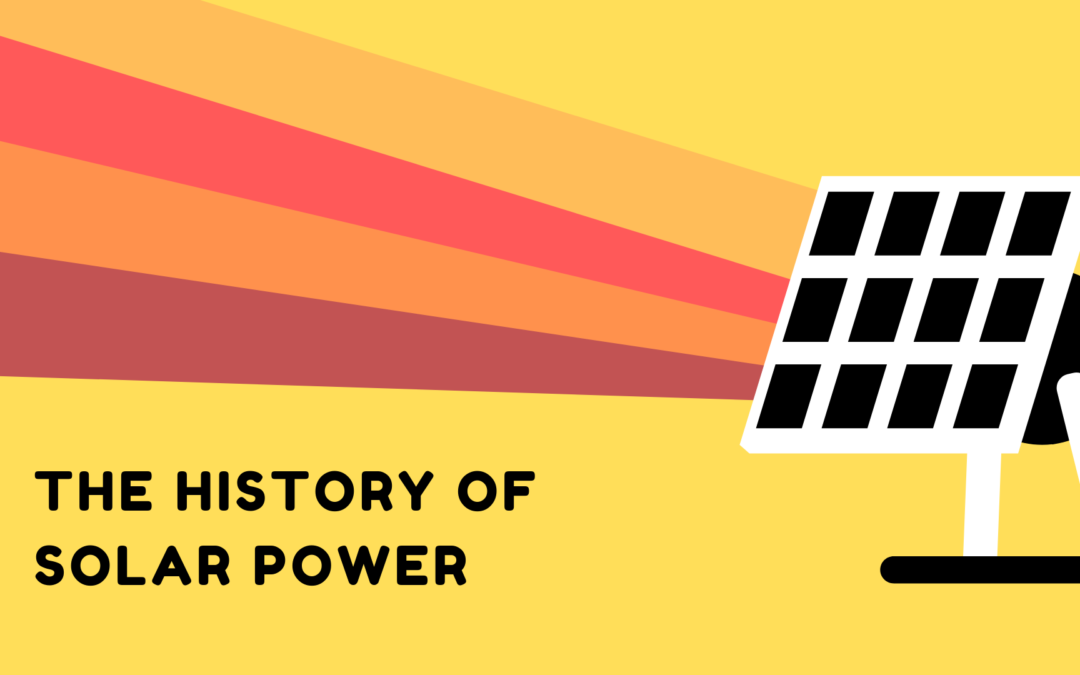We have been using the sun’s energy for as long as we have existed. But generating solar power is a relatively new concept. Keep reading to learn how solar technology and policy has evolved worldwide and in Washington state. While it is impossible to document every advancement, certain events have especially contributed to the success (and obstacles) of the solar revolution.
Solar Power In Antiquity
Solar energy has been harnessed for almost as long as humans have been around. Magnifying glasses (and later mirrors) concentrated the sun’s rays to create fires for cooking, light torches, heat buildings, and even burn ships during war.

1839
French physicist Alexandre Edmond Becquerel discovered that energy can be generated from sunlight (known as the Photovoltaic or (PV) effect).
At the tender age of 19, Becquerel created the world’s first photovoltaic cell after finding that shining light on an electrode submerged in a conductive solution would create an electric current.
While this was a monumental discovery, it would take over 100 years to realize the potential for solar power.
1954
Daryl Chapin, electrical engineer, Gerald Pearson, physicist, and chemist Calvin Fuller unveiled the first practical solar cell. While Becquerel’s photovoltaic cell was created using selenium, this new silicon solar cell was able to power objects for several hours a day.
1956
Solar cells were available commercially at $300 per watt. A standard 12-kilowatt (kW) system like we recommend today would have costed roughly $3 million. Because of this, home systems were almost unheard of, and solar cells first appeared in toys and radios.
1950’s-1960’s
The second major adopter of solar cells were the United States and Soviet Union’s space programs during the Cold War. By the late 1960’s, space-bound satellites were primarily powered by solar.

1970’s
Surprisingly, the main catalyst in predicting the looming affordability of home solar was fossil fuel giant, Exxon- now ExxonMobil. Back in the 1970’s, Exxon conducted extensive research into the economics of solar, as well as one of the first studies that concluded fossil fuels were contributing to climate change.
They were right- during the 1970’s, solar prices fell from $100 per watt, to $20 per watt.
Unfortunately, this research also began a decades-long campaign by the company to disprove their findings and convince many that climate change was a fallacy. This also marks when solar power and climate change started becoming politically polarizing.

1970’s – 2000’s
Regardless of its obstacles, solar continued to boom and new applications of the technology were being used all over the world.
From the first solar-powered car to Saudi Arabia’s solar village, solar power proved that it was here to stay- and grow.
2012 and Beyond
In 2012, US solar installations jumped 76%, marking the beginning of a renewed solar revolution. Today, solar prices have dropped to around $0.50 per watt and is expected to only continue to lower.
Despite recent solar tariffs, it’s expected to continue growing in the US as states are enacting new pro-solar policies and requirements. In just the last two years, solar power in America has tripled.
Worldwide, populous nations like China and India are implementing solar at historic rates.
Solar Power History in Washington State
1998: Net Metering was enacted (House Bill 2773), which has had a profound impact on making solar achievable for the masses.
2006: Initiative 937 (the Clean Energy Initiative), passed by voters in November 2006, requires large utilities to obtain 15% of their electricity from new renewable resources such as solar and wind (excluding hydro) by 2020
2013: 8 megawatts (MW) of solar PV were installed in Washington state– a 54% increase from 2012.
2017: State legislators signed into law one of the strongest solar incentive programs in US history.
2018: The Carbon Fee Initiative (I-1631) is on the November ballot. This will propel the clean energy revolution in the state of Washington by taxing the state’s biggest corporate emitters and putting that money back into back into our communities.
Citations
- Edmond Becquerel – Wikipedia
- First Solar Cell – Gizmodo
- History of Solar Power – Experience
- The History and Invention of Solar Panel Technology – EnergySage
- ExxonMobil Climate Change Research – Quartz
- Exxon Predicted Solar Boom – Bloomberg
- Solar Timeline – Energy.gov
- Solar Boom – Power-technology
- 2012 Year in Review – SEIA
- US Solar Tariff Impact – EnergySage
- WA State Solar Incentives – Washington State University
- Carbon Fee Initiative-1631 (I-1631)
Last Modified: November 22, 2018

